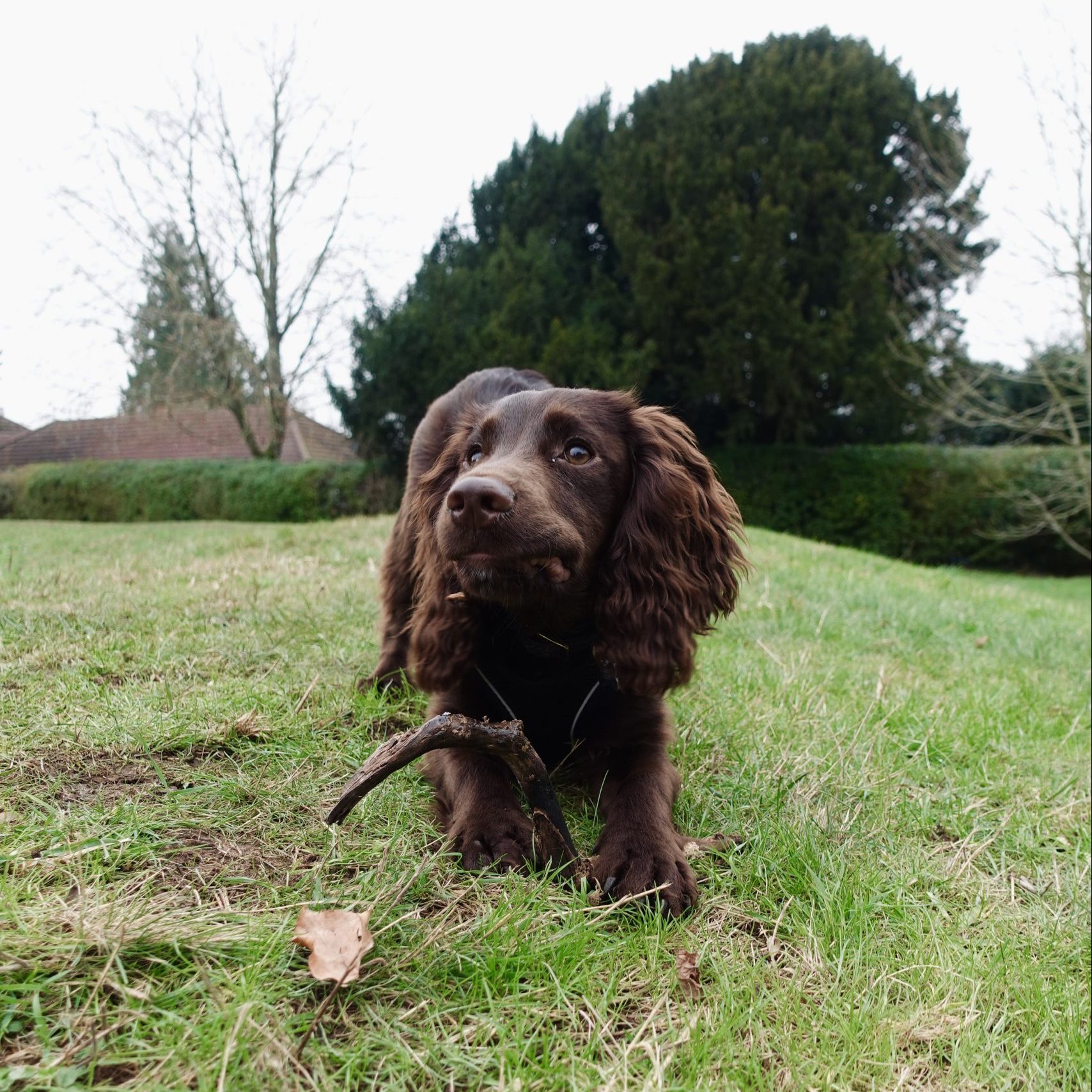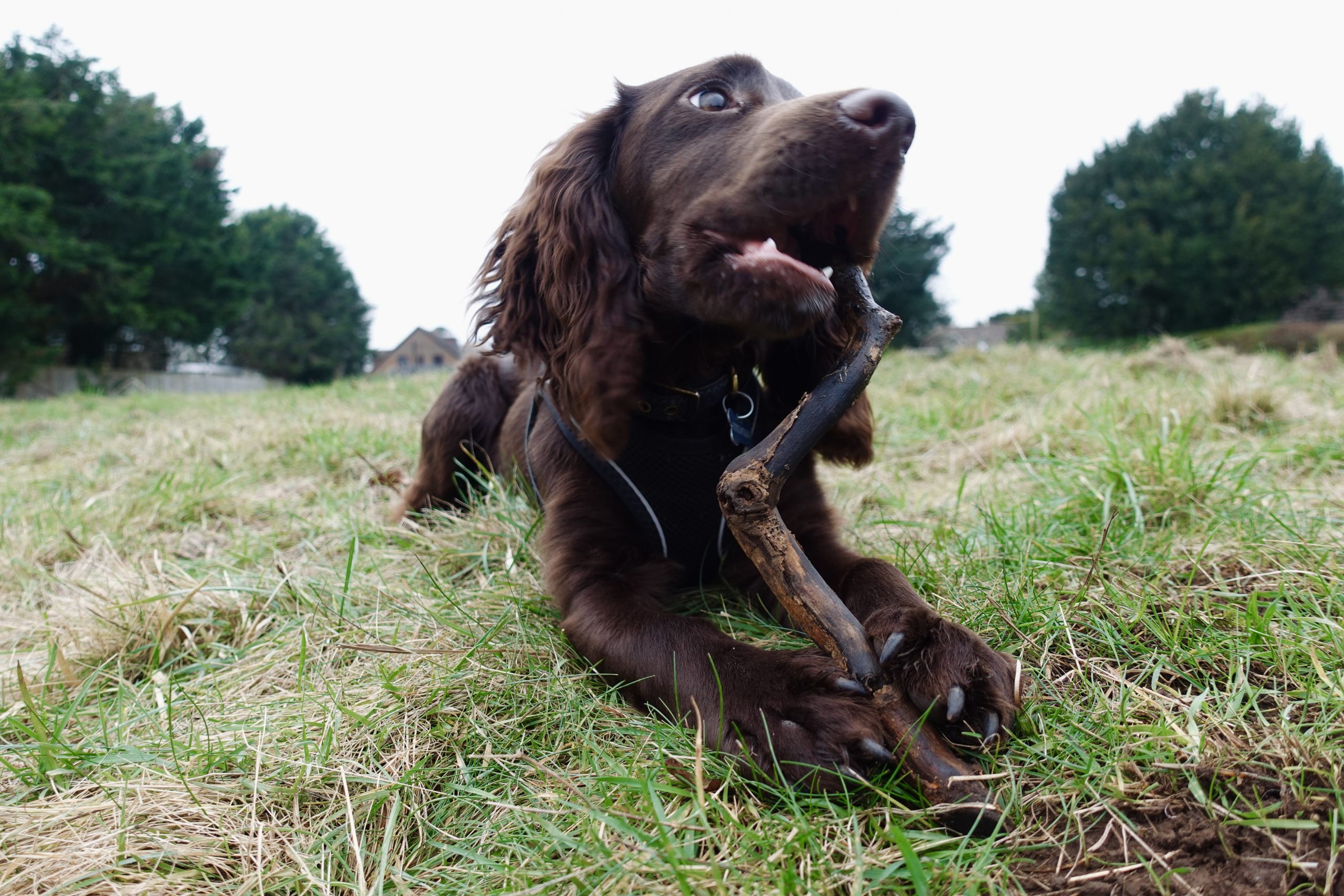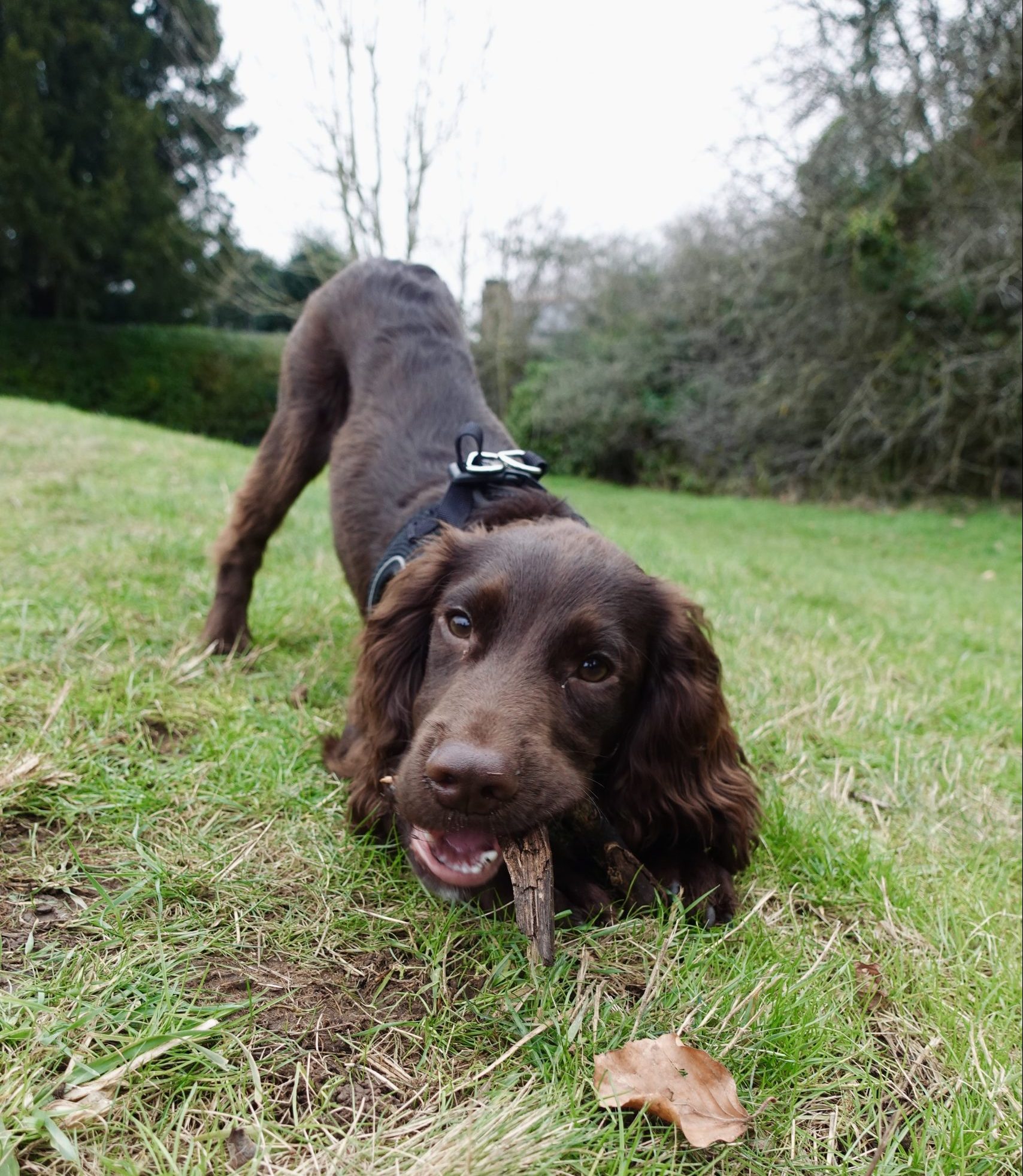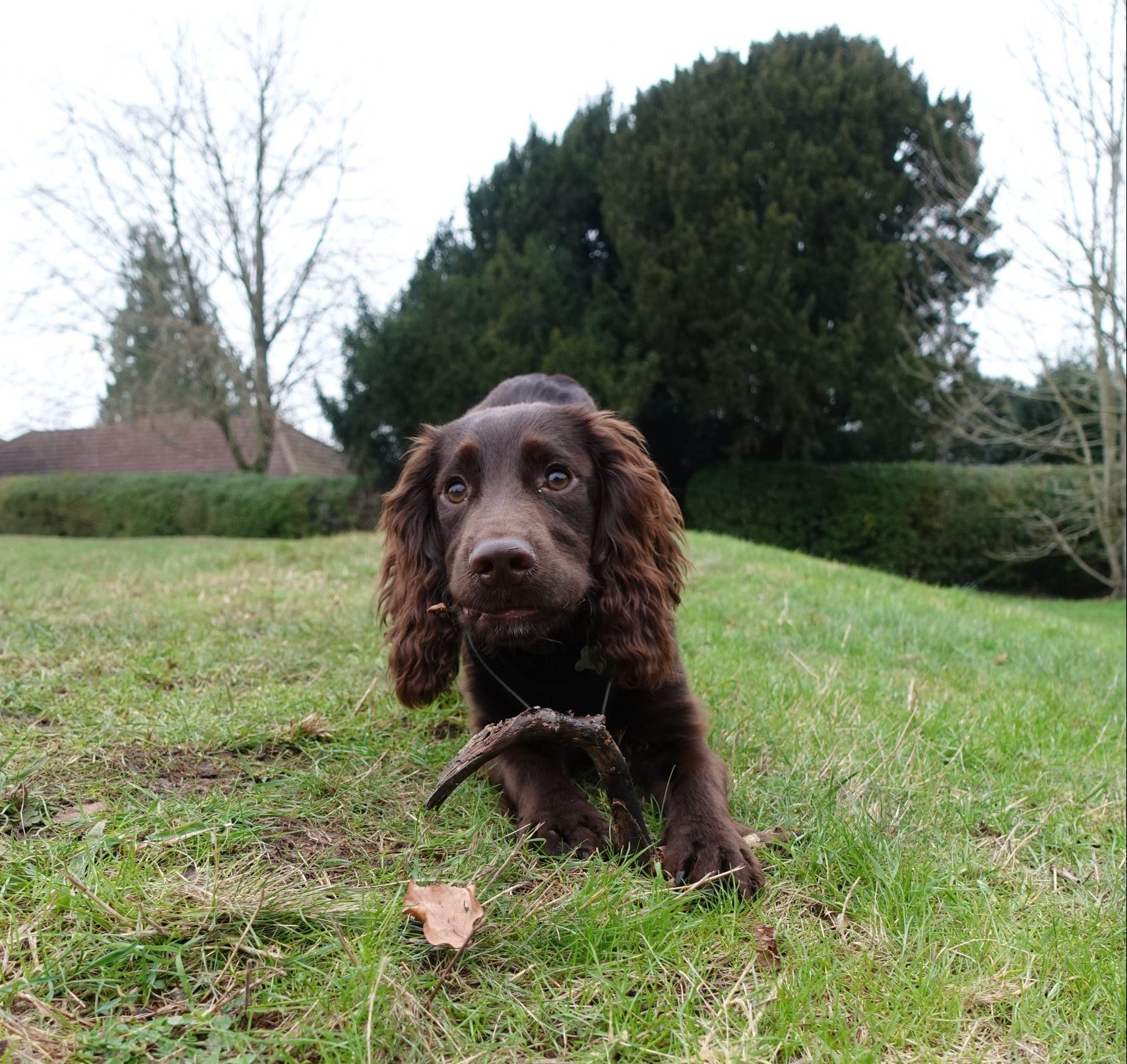Clicker training – The fastest way to teach a new spaniel new tricks
Alexandra Fraser uses her working from home lunch breaks to expand on Wilf’s repertoire of commands and tricks. This week she talks through clicker training, and how to teach everything from ‘sit’ to the slightly more complicated ‘tidy up’.


Something I learned early on with Wilf was that he needs more than a walk a day to keep him from tearing the house down.
Dogs are smart animals who often need mental stimulation, as well as physical. For Professor Akira, an extremely talented Japanese Shibu Inu, this means learning how to read (and count). Wilf isn’t quite at that stage yet, but he does need a new challenge every now and then to keep him sane.

We covered ‘sit’, ‘down’ and ‘here’ with ease before his vaccination quarantine was over. It was when I started trying to teach him ‘paw’ that I ran into a little trouble getting through to him.
Luckily a little bit of light dog-owner reading led me to purchasing the Whizzclick, a clicker-whistle combination that made me feel as professional and capable as the time I received my first set of Country Life business cards at age 21.
'Within one session he was shaking hands like a Fortune 500 CEO after a TedTalk'
From there it was almost too easy to learn ‘paw’. I associated the noise of the click with a treat by sitting with Wilf, clicking, and immediately rewarding. After that, I hid treats in my fist and clicked and rewarded every time his paw touched my hand.
I began adding the voice command (saying ‘paw’ every time he touched my hand) and within one session he was shaking hands like a Fortune 500 CEO after a TedTalk.

Our latest challenge has been ‘tidy up’ – having Wilf return his toys to his basket. This was a little bit more complicated than anything we’d done before, requiring Wilf to learn ‘take’ (holding a toy in his mouth) and pair it with ‘drop’ (which he already knew) before we even started with the basket.
Exquisite houses, the beauty of Nature, and how to get the most from your life, straight to your inbox.
The clicker sped it up by allowing me to mark the exact moment Wilf executed the right command. He’s now a regular Mary Poppins after playtime is over.
'Timing is everything - you need to click exactly when they execute the good behaviour'
Wilf might not quite be at Akira’s level yet (although if you think your pup can give it a go, you can order her training cards here) but he’s still finding new ways to impress us every day.
I just really wish he’d stop stealing my socks.
A guide to click training (Wilf Approved)
Step one. Your pup needs to associate the sound of your clicker with a treat. Spend a few minutes at a time clicking and immediately rewarding your pup with a treat and positive words.
Step two. Associate the clicker with positive behaviour. Start with something easy like ‘sit’. Timing is everything - you need to click exactly when they execute the good behaviour - the second they hit the floor. If you click by mistake it’s fine, but you should still reward them so they keep the positive association.

Step three. Try some more complicated moves, but break them down. To teach Wilf ‘tidy up’, I first had to train ‘take’ and ‘drop’. We practiced taking a toy (click) holding a toy (click) and dropping a toy (click). Once he was comfortable with these in succession, I could introduce the basket. I started by dropping the toy into the basket myself and clicking the moment it was in, then rewarding Wilf, so he learned that a toy in the basket equalled a treat.
Step four. Know when to slow it down. If Wilf is jumping up for a toy before I’ve thrown it or if he’s consistently dropping too early, I’ll run over ‘sit’ and ‘paw’ with the clicker and give lots of verbal encouragement until he’s focussed again.
Step five. Practice makes perfect! They won’t get it every time at first, but they’ll improve with every session you do.
Wilf is growing up so fast! For daily updates, follow his Instagram @wilfthecocker
